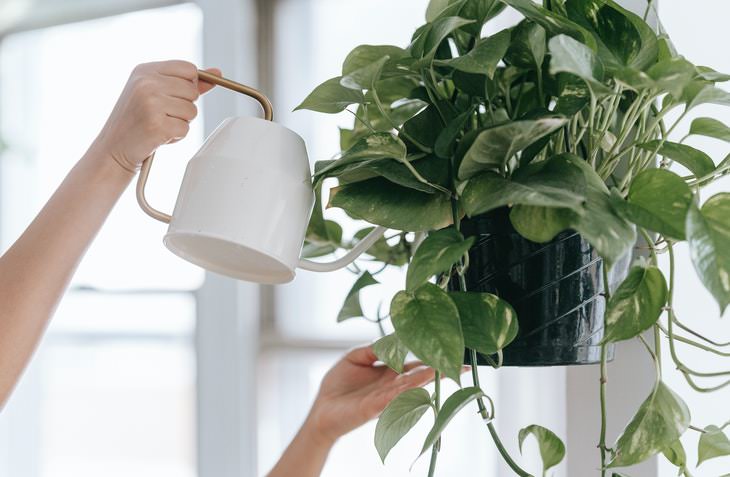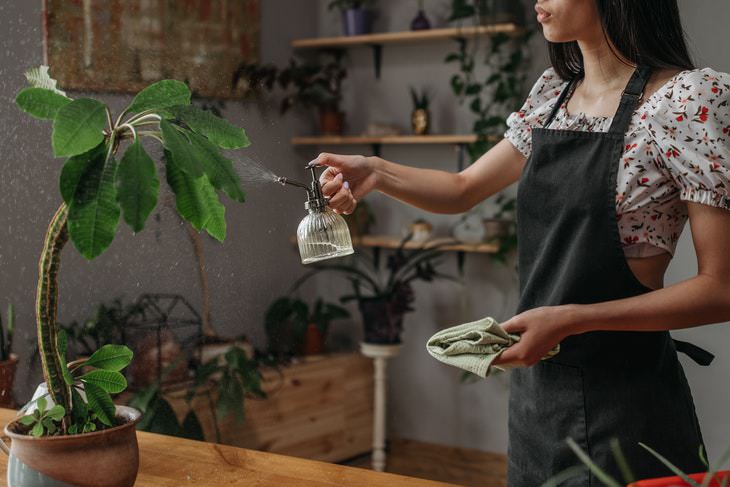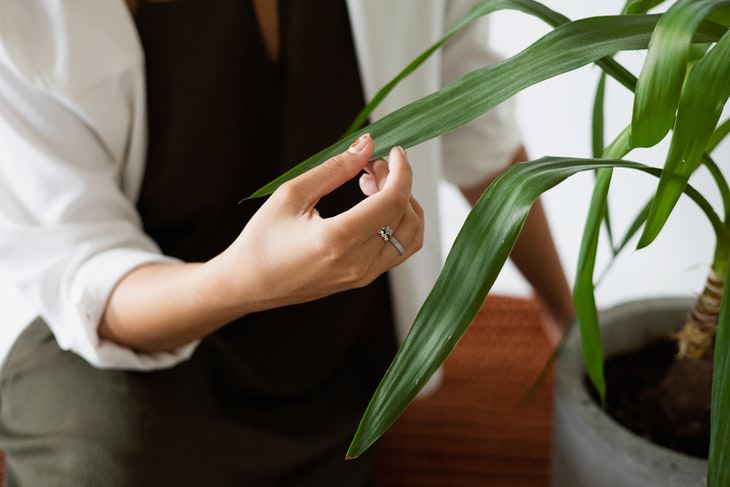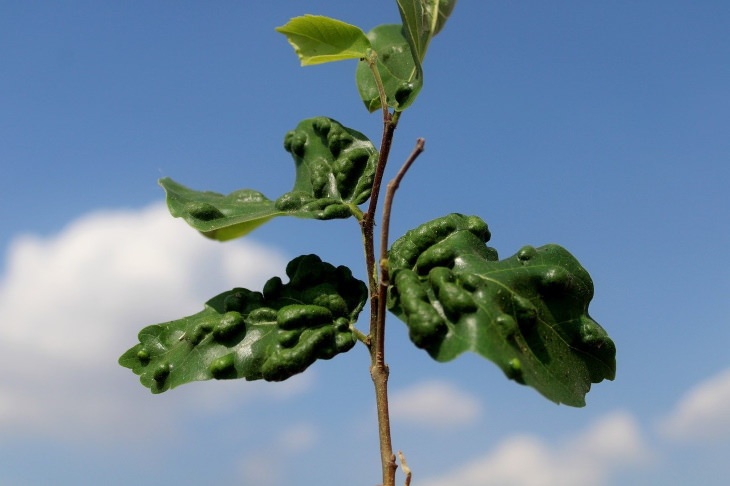1. Underwatering or overwatering

We know this may sound confusing that both overwatering and underwatering can lead to leaf curling at first, but please bear with us, we’ll explain how to distinguish between the two.
Underwatering is by far the most common culprit behind leaf curling. Apart from leaf curling, you may start to notice yellowing or browning that starts at the tips of the leaves, and the leaf itself will feel dry and crunchy.
How to fix underwatering:
- If the soil feels very dry to the touch, you need to increase the watering frequency.
Overwatering your plant may lead to leaf curling too. Waterlogged roots may develop root rot, which could make the leaves of the plant curl up and may even kill it. Another sign of overwatering is when the soil remains wet for over a week or two. If you notice that the soil around the plant has an unpleasant odor, it’s usually a clear sign of root rot.
How to fix overwatering:
- Water sparingly and let the top 2 inches (5 cm) of the soil dry before you water the plant again.
- Make sure that the pot has a drainage hole.
- If the soil doesn’t dry up in two weeks, repot your plant using a blend of potting mix and perlite, fine gravel, or mulch – to improve the drainage.
- When repotting, examine the plant’s roots for root rot. If you notice that some of the roots are mushy or black, they will need to be removed using a disinfected knife or shears. Cut off all affected roots, and only then repot the plant.
2. Too much heat or light
Different types of plants require different amounts of heat and light. Bear in mind that plants that prefer low or moderate light, such as prayer plants and philodendrons, are more prone to leaf curling, so it’s worth paying closer attention to them. Read up about the plants you have and learn their temperature and sun needs.
If your plant is in a sunny spot, such as the windowsill, and you notice that its leaves have turned lighter, look droopy, or begin to curl, move it out of direct sunlight and heat. If too much heat is causing the issue, the leaves at the top of the plant are usually more affected.
How to fix the issue:
- Move some of your plants around in the summer when the sun is more intense, as well as in the winter if your plants sit near a radiator or any other direct source of heat.
- If relocating the plant isn’t possible, try placing a mesh curtain between the plant and the source of heat or light to shield the plant.
Related Article: How to Identify and Manage 10 Common Plant Diseases
3. Low humidity
Plants are very sensitive to humidity levels. Those plants that originated from jungles and forests, such as philodendrons, prayer plants, and ferns, require high atmospheric humidity. When the humidity level is too low, you’ll see their leaves curling up and the tips of the leaves turning yellow or brown. If not treated, the plant may even perish.
How to fix the issue:
- Mist the plant several times a day with water.
- Place the plant on a tray filled with pebbles and water.
- Place a humidifier near the plant.
- Group several plants together to prevent moisture loss from the leaves.
4. Aging
In some cases, curling leaves are no cause for concern at all. Instead, it could just mean that the leaf is getting old and it’s time for the plant to lose it. Usually, the leaves at the bottom of the plant, which are the oldest ones, will wilt away. If the wilted leaf bothers you, just trim it off with a clean pair of gardening shears.
5. Pests and disease
Certain plant diseases can distort the shape of plants. Powdery mildew, for example, is a common and treatable fungus that infects plants. It looks like flour sprinkled in clusters on the plant.
How to treat powdery mildew:
- Mix 1 teaspoon of baking soda, 1 teaspoon dish soap, and 4 cups of water. Use this mixture to mist your plant weekly until all the mildew is gone.
Plant pests can distort the shape of the leaves too. Aphids, thrips, and whiteflies are tiny insects that can cause leaf curl, particularly at the bottom of the leaf because they usually congregate on the underside of leaves. As these pests suck the moisture out of a plant, they can make the leaves curl upwards.
How to get rid of pests:
- Use insecticide to get rid of these pests, or spray plain old soapy water weekly for several weeks until the pests are gone.
Share this information with those who have indoor plants!





